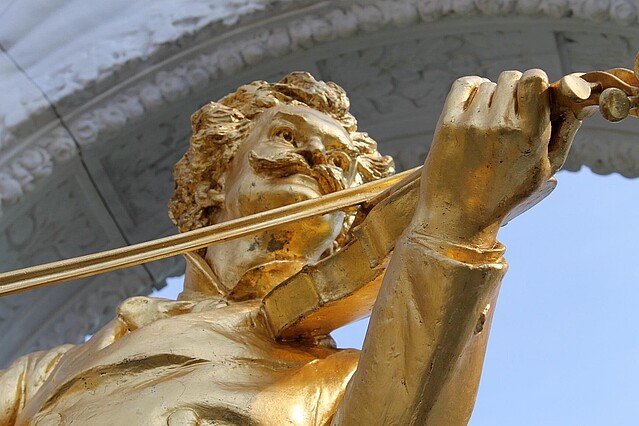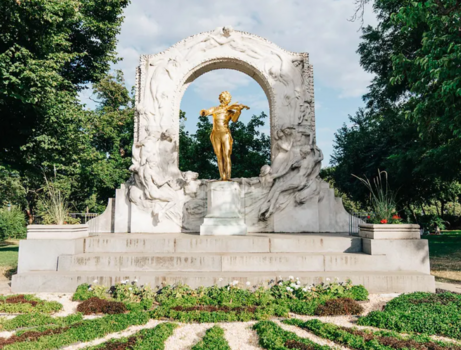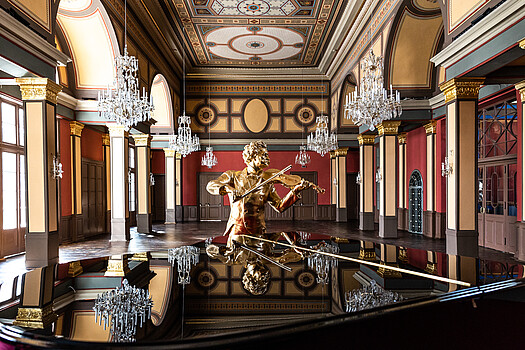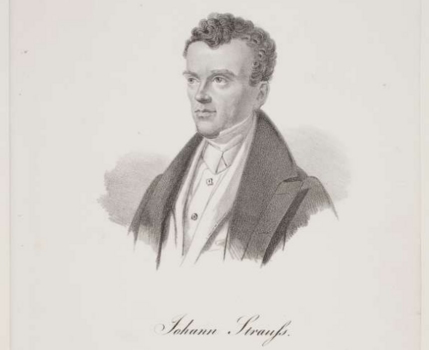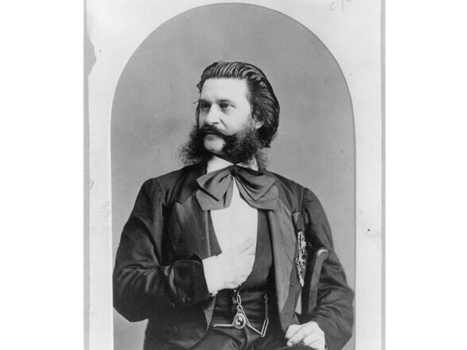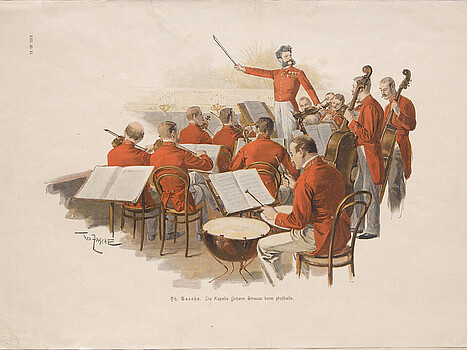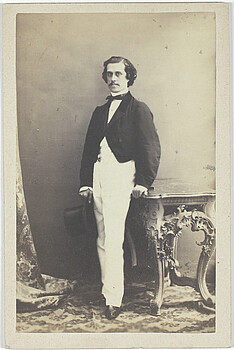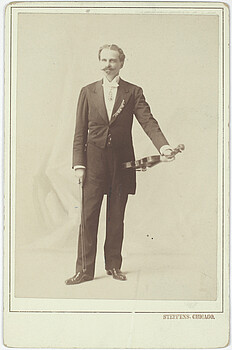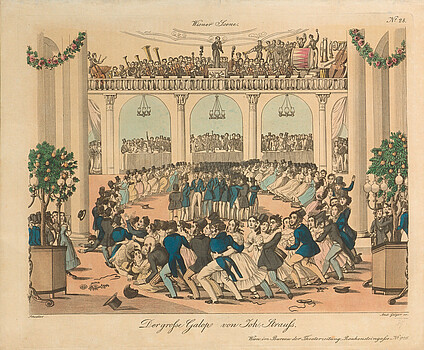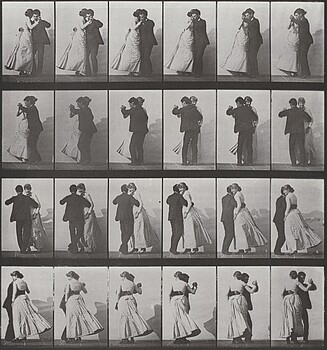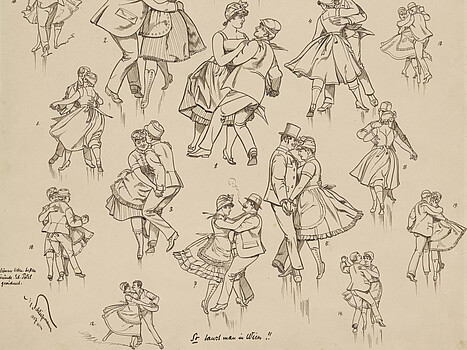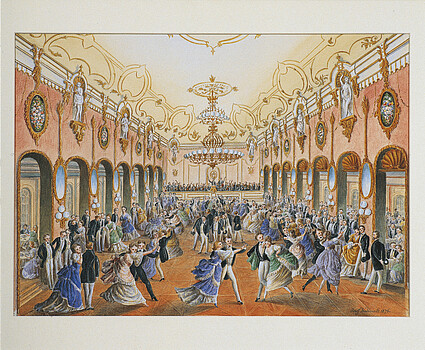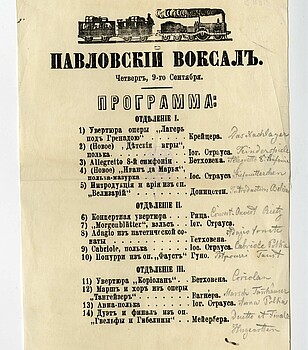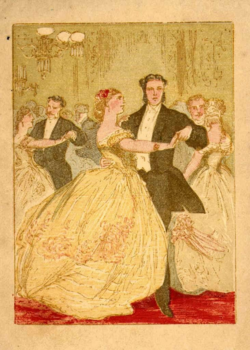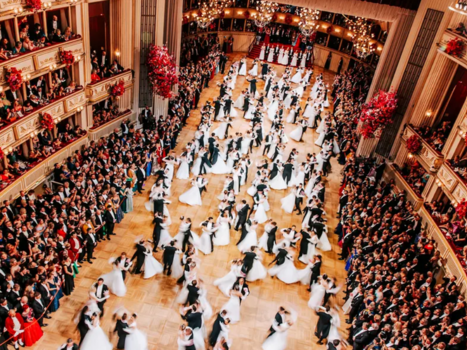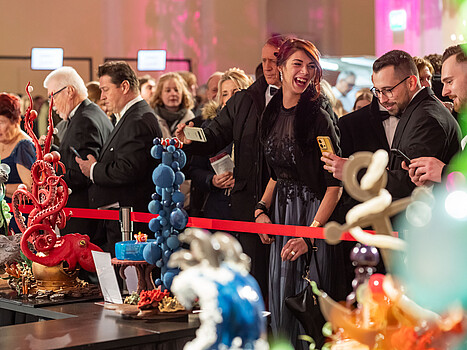Waltz King, Music Mogul
February 17, 2025|TA
The Strauss dynasty turned a dance trend into an enduring tradition – one that lives to this day in Vienna and around the world.
The Blue Danube Waltz: even those who don’t know its name will recognize the tune, which has featured everywhere from Disneyland to the Olympics, from The Simpsons to Stanley Kubrick’s 2001: A Space Odyssey. The captivating first three notes of one of the most iconic waltzes ever composed transport listeners to glittering ballrooms with elegant dancers.
The genius behind the piece – and its viral commercial success – is Johann Strauss II, who is inextricably linked to Vienna, as synonymous with the city as Mozart, Sisi and Schnitzel.
A family-run scale-up
It started with Johann Strauss I: a well-known musician who founded the world’s first travelling orchestra. He and his business partner, Josef Lanner, took a popular Austrian folk dance and turned it into a twirling, dizzying global phenomenon. Johann’s marketing acumen was undeniably good, finding success in composing and playing dance music – particularly the waltz, which swept society as racy, fast-paced and intimate dance that bridged stuffier, more traditional music of a bygone era and more progressive compositions to come.
Strauss the elder cleverly adapted popular melodies of the day to suit a wider audience and pioneered writing pieces with individual, recognizable titles in order to boost sales of his sheet music. He was one of the first to actively charge entry fees to concerts, rather than just relying on donations from patrons.
Though he forbade his sons, Johann, Josef and Eduard, from becoming musicians, all three heartily disobeyed, forming their own orchestra and becoming performers, conductors and composers in their own right. The most famous was Johann the Younger who, with the support of his mother, secretly persevered with his musical education and began writing his own music at a young age.
Upon their father’s death in 1849, when Johann II was just 19 years old, the Strauss sons took over his orchestra and merged it with theirs. ‘Strauss’ soon became a household name: in 1852, a French journalist wrote that “in every house, on every piano in Vienna lie Strauss waltzes.”
Business success was very much a family affair: Johann Strauss II’s mother, Maria Anna, was his staunchest supporter, and consequently manager and public relations officer. His first wife, Henriette, became his manager, and planned his tours and copied sheet music; it may even have been her who led to Johann composing operettas. His third wife later took on a similar role.
Waltz-mad Vienna
By the mid-19th century, waltzing was all the rage, with foreign visitors to the city noting that the Viennese were mad for dancing. It filtered its way through all echelons of society, causing scandal and controversy. That the upper classes were clutching their pearls, decrying the waltz to be provocative and immoral, naturally only served to boost its popularity.
It was a time of rapid industrialization, urbanization and an intellectual move towards individualism and expressiveness. The innovative Strauss family moved musically with the times, working to dismantle the difference between ‘art’ music and popular music. In total, Johann Strauss II composed over 500 waltzes, polkas, marches, and operettas, with Josef writing 283 works and Eduard more than 300.
The family did brisk business employing, at one point, over 200 musicians for as many as six balls a night.
Going global
Whilst his brothers held down the fort in the Austro-Hungarian Empire, Johann Strauss II was able to take his Strauss orchestra, and the magic of the waltz, abroad. He toured the Empire as well as Russia, Germany, Poland, France, Italy, and as far afield as North America.
Johann Strauss II was universally beloved by musicians and critics of the time. Eduard Hanslick, an acclaimed contemporary music critic, commented: “His popularity is almost immeasurable: Strauss’ melodies can be heard in every part of the world and, in our part of the world, in almost every home.”
'Alles Waltzer!' for the Viennese economy
Though the Strauss legacy reverberates across the globe, it remains particularly vibrant in Vienna, which is now celebrating 250 years of Strauss. The Vienna Philharmonic’s famous New Year’s Concert heavily features works from the Strauss family, attracting millions of viewers and listeners each year from over 90 countries. The Blue Danube Waltz is traditionally played as an encore.
Strauss pieces are regularly featured during Vienna’s spectacular ball season, which is a significant boost for the local economy from November to March each winter, pulling in musicians, tailors, hairdressers, hotels, restaurants, jewelers, photographers, shoemakers, security, event coordinators, technicians, florists and many others. Guests take time to network informally with business contacts or simply cut loose on the dancefloor. It’s estimated that the 2024/25 season will see up to 520,000 ball-goers, with 10-30% of them being international. In total, Viennese balls generate a turnover of around 190 million euros.
More than just social events, Viennese balls are a “vibrant business card for Viennese businesses,” claims Maria Neumann, Chairwoman of the Trade and Crafts Division of the Vienna Economic Chamber, establishing the city as a “cultural metropolis in Europe”.
Johann Strauss II’s 200th birthday is on 25 October 2025, but in true Viennese style, celebrations will last the whole year. Head over to the website wien.info to discover a vast cultural programme and dive into the wonderful world of Strauss.
